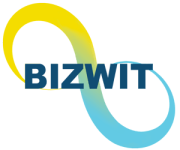Global Frontotemporal Disorders Treatment Market is valued at approximately USD XX billion in 2022 and is anticipated to grow with a healthy growth rate of more than XX% over the forecast period 2023-2030. Frontotemporal disorders (FTD) are also referred to as frontotemporal dementia or frontotemporal degeneration disease, which is caused due to the damage of neurons present in the frontal and temporal lobes of the brain. This disorder includes a major loss of thinking abilities that affects a person’s ability to carry out their daily activities like working, driving, and preparing meals. Also, it encompasses symptoms such as emotional problems, difficulty with work, unusual behaviors, trouble communicating, or difficulty with walking. The rising funding by the government, as well as non-government organizations, increasing expenditure on healthcare treatments, growing awareness regarding treatment availability, and increasing geriatric population, are the major factors that are augmenting the market demand across the globe.
In addition, the increasing incidences of dementia and other frontotemporal disorders among the population are playing a significant role that is propelling the market demand at a considerable rate.
According to Alzheimer’s Disease International (ADI), in 2020, it was estimated that there were more than 55 million people worldwide suffering from dementia. Also, this number is anticipated to get double every 20 years, which is projected to reach 78 million by 2030 and 139 million by 2050. Thus, these aforementioned factors are propelling the growth of the Frontotemporal Disorders Treatment Market during the estimated period. Furthermore, the rising emphasis on research and development activities, as well as the increasing drug approvals present various lucrative opportunities over the forecasting years. For instance, in November 2022, the U.S. Food and Drug Administration (FDA) launched its Rare Neurodegenerative Disease Grant Program after the passing Accelerating Access to Critical Therapies for ALS Act. Through this initiative, private and public organizations are able to receive grants and contracts to help with the costs of conducting research and development to find a cure for ALS and other rare neurodegenerative diseases that affect both children and adults. Such activities are anticipated to have a favorable impact on the dynamics of the market for frontotemporal disorders treatment. However, the unavailability of skilled professionals and the stringent government regulations are challenging the market growth throughout the forecast period of 2023-2030.
The key regions considered for the Global Frontotemporal Disorders Treatment Market study include Asia Pacific, North America, Europe, Latin America, and Middle East & Africa. North America dominated the market in 2022 owing to the increasing prevalence of frontotemporal disorders, the presence of well-established healthcare facilities and advances in research activities. As per the Association for Frontotemporal Degeneration, more than 60,000 Americans are estimated to be living with FTD, and the number is projected to double by 2050. Whereas, Asia Pacific is expected to grow at the highest CAGR over the forecasting years. The rising cases of target disorders, increasing aging population, high unmet medical needs, and increasing healthcare expenditure are significantly propelling the market demand across the region.
Major market players included in this report are:
Pfizer Inc.
Johnson & Johnson
Sanofi S.A.
Eli Lilly and Company
GlaxoSmithKline Plc.
Novartis AG
Mylan N.V.
Merck & Company, Inc.
AstraZeneca plc.
Allergen plc
Recent Developments in the Market:
Ø In April 2022, the US FDA approved Lupin Ltd to put its generic version of the antidepressant medicine Desvenlafaxine extended-release tablets on the market.
Ø In December 2021, the US FDA authorized Caplyta (lumateperone) for the treatment of adult bipolar depression. The only medication authorized by the FDA for the treatment of depressive symptoms resulting from bipolar I or bipolar II disorder in adults as monotherapy or adjunctive therapy with either valproate or lithium is Caplyta, an atypical antipsychotic from the biopharmaceutical company Intra-Cellular Therapies.
Global Frontotemporal Disorders Treatment Market Report Scope:
ü Historical Data – 2020 – 2021
ü Base Year for Estimation – 2022
ü Forecast period – 2023-2030
ü Report Coverage – Revenue forecast, Company Ranking, Competitive Landscape, Growth factors, and Trends
ü Segments Covered – Drug Class, Disease Indication, Distribution Channel, Region
ü Regional Scope – North America; Europe; Asia Pacific; Latin America; Middle East & Africa
ü Customization Scope – Free report customization (equivalent up to 8 analyst’s working hours) with purchase. Addition or alteration to country, regional & segment scope*
The objective of the study is to define market sizes of different segments & countries in recent years and to forecast the values to the coming years. The report is designed to incorporate both qualitative and quantitative aspects of the industry within countries involved in the study.
The report also caters detailed information about the crucial aspects such as driving factors & challenges which will define the future growth of the market. Additionally, it also incorporates potential opportunities in micro markets for stakeholders to invest along with the detailed analysis of competitive landscape and product offerings of key players. The detailed segments and sub-segment of the market are explained below:
By Drug Class:
Cognitive Enhancers
Antipsychotics
Antidepressants
CNS Stimulants
Other Drug Classes
By Disease Indication:
Frontotemporal Dementia
Primary Progressive Aphasia
Movement Disorders
By Distribution Channel:
Hospital Pharmacies
Retail Pharmacies
Online Pharmacies
By Region:
North America
U.S.
Canada
Europe
UK
Germany
France
Spain
Italy
ROE
Asia Pacific
China
India
Japan
Australia
South Korea
RoAPAC
Latin America
Brazil
Mexico
Middle East & Africa
Saudi Arabia
South Africa
Rest of Middle East & Africa



